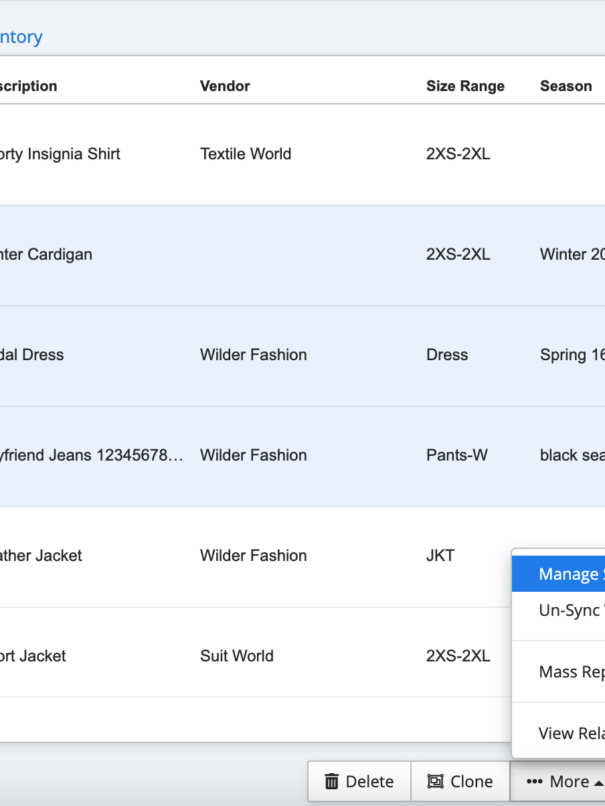eCommerce has not only expanded the horizons of retail but has fundamentally transformed how consumers interact with brands and make purchasing decisions. This transformation is driven by a range of factors, from the shifting shopping habits of millennials to the integration of cutting-edge technologies.
In our blog post, we will delve into how eCommerce is reshaping the apparel industry, focusing on market growth, consumer behavior, platform evolution, and the deployment of innovative technologies to enhance customer experiences and online apparel sales.
A New Shopping Trend
Leading the charge in the online shopping revolution are, quite expectedly, millennials. This trend of online shopping marks a significant pivot toward eCommerce among this demographic but besides millennials, it seems that this way of shopping is appreciated by everyone.
Nowadays, shoppers enjoy access to an international array of products, competitive prices, and the luxury of making purchases at any hour.
With the advent of user-friendly eCommerce platforms coupled with robust delivery networks, it’s apparent why consumers have taken so warmly to online shopping.
eCommerce Platforms Fueling Fashion Sales
Your fashion eCommerce website acts simultaneously as a showroom, a sales associate, and a cashier. A top-notch eCommerce platform simplifies the process for shoppers to locate and buy items while offering tools that streamline managing your online store.
Some of the leading eCommerce platforms such as Shopify, BigCommerce, and Wix are propelling fashion industry revenues with their easy-to-use layouts, adaptable design options, and sophisticated delivery solutions.
Now, if you are faced with a multitude of choices pinpointing the ideal eCommerce solution for one’s venture, it can seem daunting.
Fear not, we stand ready to assist.
Key Features for Apparel Retailers
The digital garment retail sector will be heavily leveraging technological advances in 2024 and beyond. Virtual fitting room technology stands out as a significant catalyst for expansion by improving customer engagement with online shopping portals. Innovations led by artificial intelligence and Adobe integration are propelling platforms such as Adobe Commerce (previously known as Magento) to the forefront of tech advancements in this area.
Augmented reality (AR) and virtual reality (VR) technologies are critically transforming retail experiences through virtual demonstrations of products. With over fifty percent of internet-based shopping transpiring on mobile devices, it’s essential that eCommerce platforms enhance their checkout processes for mobile use. These progressive features encompass payment processing, inventory management, and marketing tools which streamline the consumer experience making digital purchasing both user-friendly and immersive.
Comparison of Platform Performance
It’s crucial to conduct a detailed analysis of eCommerce platforms, taking into account factors such as:
- Search engine optimization friendliness
- Adaptability for mobile devices
- Ease of use
- Ability to scale up
- Security protocols
- Customer support options
The features of eCommerce platforms encompass cost, features, and capabilities for selling across multiple channels and they will assist you in selecting the most fitting eCommerce platform tailored specifically for your garment business.
Which platforms rise above the rest when subjected to these rigorous standards? Leading the pack in online fashion retail are powerhouse eCommerce platforms like:
- Amazon
- Walmart
- eBay
- AliExpress
Although notably frequented by shoppers worldwide, it is essential that you match an appropriate platform with your distinctive requirements and objectives.
Thorough research is key. Make sure you choose what aligns best with your vision.
How to Ensure Your Online Store Thrives
While eCommerce platforms set a good ground for all apparel businesses, to operate effectively you will need to leverage the right tools and strategies. Let’s look at some of the most effective and notable ones below.
Inventory Management Innovations
The successful operation of an online clothing business hinges on effective inventory management. With the advent of real-time tracking capabilities and seamless integration with enterprise resource planning (ERP) systems, there is a significant boost in supply chain robustness and operational efficacy, which can translate into better results for the business.
Cutting-edge systems designed for inventory control are capable of:
- Averting instances where products are oversold or shopping carts are abandoned by maintaining precise stock quantities across all sales platforms
- Diminishing reliance on manual data entry processes, thus addressing issues such as data loss and restrictions related to scalability
- Offering advanced prediction tools through artificial intelligence and machine learning innovations that expedite product development cycles and elevate consumer satisfaction levels.
Real-Time Inventory Tracking
Imagine having an up-to-the-minute count of every product in your stockpile. Real-time inventory tracking makes this possible, revolutionizing the way inventory is managed across various storage facilities. It fosters efficient distribution and fine-tunes the balance of goods available.
Real-time access to inventory data guarantees that sought-after products remain on hand, thereby improving customer satisfaction by diminishing instances of backorders. It fortifies supply chain durability as companies can swiftly adjust to fluctuating demands and gear up for unforeseen disruptions.
Integration with ERP Systems
Using an integration platform to meld eCommerce platforms with ERP systems can lead to a superior level of inventory management through data integration. Benefits include:
- Enhanced precision in data
- Better informed decision-making processes
- Clear insight into both supply chain and consumer habits
- Streamlining of the supply chain
- Facilitation business growth
In preparation for this process, it’s important to grasp the nature of your current data and applications, pinpoint essential transactional details, and bring automation into your data procedures.
This preparatory work promises a more streamlined operation post-integration. As businesses partake in omnichannel sales strategies, eCommerce integration solutions become indispensable — they adapt as your enterprise scales up its operations by incorporating new systems and automating workflows.
Customer Relationship Management in Apparel eCommerce
Within the eCommerce sector, managing customer relationships effectively is crucial. Systems designed for customer relationship management offer teams comprehensive histories of client interactions, thereby improving the level of personalized care they can provide. These CRM tools also improve dialogues between companies and their customers by allowing quick response times to inquiries and more tailored problem-resolution efforts, thus enhancing the overall shopping experience.
When businesses scrutinize information housed in these CRM systems, they have a better chance of pinpointing which products sell best and which groups of consumers are most valuable—information that helps refine sales strategies. Seamless integration between CRM solutions with leading eCommerce platforms and enterprise resource planning systems ensures consistent data regarding product details, pricing models, and inventory control across various channels.
Personalization Through Data
The essence of effective CRM is rooted in the personalization it offers. By examining and safeguarding customer data, which includes behavioral patterns, purchase history, and individual preferences, CRM systems are able to customize the entire online shopping journey. This ensures a tailored approach from first contact right through to follow-up interactions post-sale. For such customization to be truly impactful, managing customer data with precision is crucial.
CRM tools utilize meticulously crafted customer profiles drawn from insightful data analysis for more targeted marketing endeavors and refined relationship management approaches. Not only does personalization fostered by these CRM systems enhance user engagement, but it also has the potential to trim down on marketing expenditures significantly. With advancements like AI-powered suggestion engines and conversational agents at our disposal, technology continues to revolutionize personalized consumer experiences during their virtual shopping excursions.
All in all, when CRM is integrated with an ERP system, a fashion eCommerce website can enjoy complete freedom in managing their entire business as well as each vendor, client, and prospect from a single hub with ease.
Enhancing Customer Loyalty
Retaining existing customers is as vital as attracting new ones. Here are some strategies to help you retain your customers and increase online sales:
- Personalize the customer shopping experience to increase customer engagement.
- Practice ethical data management to build trust with your customers.
- Communicate transparently with your customers to strengthen customer loyalty.
Implementing these strategies will help you retain your customers and increase repeat purchase rates.
Moreover, implementing curated email marketing campaigns that communicate the brand’s narrative or provide discounts can effectively generate repeat sales and amplify customer lifetime value. By consolidating personalization strategies, trust-building practices, and targeted email campaigns, businesses can foster a loyal customer base and encourage repeat business.
Payment Processing and Security
For eCommerce businesses specializing in apparel, the cornerstone of their success lies in reliable payment processing. This critical service goes beyond simply handling online payments. It provides a safeguard against security threats and fraudulent activities by employing robust technologies such as SSL (Secure Sockets Layer), which fortifies financial transactions with data encryption and authenticates websites.
In an effort to bolster transaction security and curtail fraud, you can implement a range of systems dedicated to detecting, preventing, and defending against deceitful practices. For instance, fraud scrubbing measures are put into place that correlate ISP details with physical address information to validate that both billing and shipping particulars align correctly.
With a secure eCommerce store, you can ensure that your online apparel sales will rise as your reputation grows.
Streamlining The Checkout
For elevating completed transaction rates and encouraging customer loyalty, it’s essential to ensure this step is devoid of any impediments. Simplifying the checkout can mean enabling guest checkouts, minimizing required data entry fields, and stripping away superfluous elements that may distract customers. All of this can increase online sales and ensure your online apparel sales thrive.
Dispatching automated emails to shoppers who have left items in their carts without completing a purchase can serve as an effective tactic for recapturing sales that might otherwise be forfeited. By prompting them with reminders about products they showed interest in, such measures can substantially enhance user satisfaction while also boosting conversion percentages.
Conclusion
eCommerce has fundamentally transformed the apparel industry, shifting how consumers interact with brands and how online apparel sales are made. Driven by the preferences of tech-savvy millennials, online shopping has grown due to its convenience, variety, and accessibility it offers, allowing consumers to shop from anywhere at any time.
As the industry evolves, it is essential for retailers to adopt streamlined eCommerce platforms that enhance the shopping experience through intuitive design and reliable functionality. By focusing on reducing product return rates through accurate descriptions and quality visuals, and improving inventory management, retailers can better meet consumer needs and minimize operational challenges.







